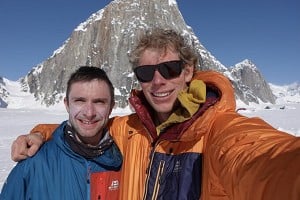
Following rediscoveries of Traditional Owner cultural heritage in the popular climbing site of Dyurrite/Mount Arapiles in Australia by Parks Victoria, the government agency plan to temporarily prohibit public access to 11% of the climbing areas in Dyurrite/Arapiles. In a letter to the Shadow Minister for Aboriginal Affairs, the Victorian Climbing Club (VCC) claim that Parks Victoria are falsely describing some sites as rediscoveries when they are known to both relevant cultural heritage bodies and climbers.
Cultural heritage protection laws have been in place on Dyurrite/Mount Arapiles since 1975. The National Parks Act 1975 declares it an offence to damage archaeological objects, while the Aboriginal Heritage Act 2006 prohibits harm to cultural heritage. This latest rediscovery of a stone-tool production site, which extends for around 200 metres at the base of the formation, is where Traditional Owners – the Jadawadjali, part of the Wotjobaluk Nations – manufactured a variety of tools from stone.
Kevin Lindorff, President of the VCC, argues in the letter that the one of the major rediscoveries at Tiger Wall is not in fact a rediscovery, and that this site has been known about by Aboriginal Victoria for 25 years, while emphasising that no climber has been charged with damaging cultural history in the 60-year history of climbing at Dyurrite/Arapiles. He told UKC:
'The areas that the public are being asked to stay out of include earlier exclusions of Declaration Crag and Around the World Boulder, as well as a small site near Sonic Boom that people have respected for years without any need for the proclamation of a Set-aside Determination.'
Parks Victoria intend to prohibit public access to:
· the area immediately around and including Mr Chicken boulder (Dyurrite)
· the area immediately around and including Castle Crag (Dyurrite)
· the base of the cliffs running from the Plaque area and along the base of Tiger wall (Dyurrite)
· all of Lil Lil (Black Ian's) in the Black Range State Park
Parks Victoria are planning surveys of particular areas over the next six months, where more bans may be enforced, before putting a new Set Aside Determinations in place to make these bans legally enforceable.
Matthew Jackson, Chief Executive Officer of Parks Victoria, commented:
'The Aboriginal cultural heritage of Mount Arapiles-Tooan State Park continues to be revealed, with these exciting rediscoveries providing a glimpse into the area's rich history. We know that protecting natural and cultural values can sometimes mean restricting or limiting public access, but it's up to all of us to protect these special places for future generations. Cultural heritage and environmental values can co-exist with recreation – but they must be carefully managed and protected according to legislation.'
In August, a temporary access ban was enforced on two locations in the nearby Gariwerd/The Grampians National Park following the rediscovery of Aboriginal heritage. The entirety of Taipan Wall (Gunigalk), Spurt Wall and a section of Bundaleer (Bugiga) were placed under a 'Temporary Protection Zone' with no public access permitted.
On 28th October, activist group Save Grampians Climbing wrote a blog outlining the discrepancy between Parks Victoria's treatment of climbers and tourists and walkers across various sites. Hollow Mountain in The Grampians National Park, they explain, is both a protected area and a popular tourist spot with a walking track over a rock tool quarry, and climbing is prohibited. Damage to the rock including scratch carvings and graffiti has received press coverage, and photos of tourists scrambling and climbing in the caves have been posted on social media. The group commented in their blog:
'Parks Victoria [PV] allows tourists to damage Aboriginal sites at Hollow Mountain Special Protection Area. PV denies knowledge of the problem and refuses to close area to tourists despite closing numerous climbing sites for the same reason. This proves PV's vendetta against climbers.
'[Parks Victoria] seem happy to close off nearby Taipan Wall and huge sections of Arapiles to everyone as some sort of "temporary protection zone" whilst they sort out the details of assessments and devise new management solutions with TOs. We have been told this could take years to sort out. But don't forget these are predominantly climbing areas, not tourist sites listed on Visit Victoria. Why is Hollow Mountain any different to Taipan Wall? Tourists are walking over and writing on important cultural heritage sites. Parks Victoria – ignore this at your peril.'
Following this Set-aside Determination that was placed on Gariwerd/The Grampians, locals report that visitor numbers have dropped considerably as both national and international climbers avoid the area, who help sustain the local economy and community. Residents in Natimuk have expressed concerns about the negative impact on the town of a further climbing ban at Dyurrite/Arapiles. In the VCC's letter to the Shadow Minister, Kevin Lindorff wrote:
'Local Natimuk residents include a significant proportion of the population who have moved themselves and their families to the town primarily because of the climbing opportunities. They have brought significant skills to the town and the region. The influx of their children into the small local primary school have kept that school from closing. Residents include doctors and other medical professionals, teachers, IT professionals, small- business owners and entrepreneurs, trades-people, artists, rock-climbing guides, and so on. They are involved in various town committees, the CFA, and indeed all aspects of the fabric of town life. The loss of even a significant fraction of such people would be disastrous for Natimuk.'
Traditional Owners are represented in the area by the Barengi Gadjin Land Council (BGLC). A respresentative, Stuart Harradine, commented:
'We are pleased as the First Nations people of Dyurrite to play a key role in the reidentification and protection of our cultural heritage in this landscape. This is a part of upholding our sacred responsibility to care for Country and culture as passed to us through tens of thousands of years of tradition. We are also pleased that Parks Victoria is able to commit resources to undertake a thorough heritage survey at Dyurrite, an action that we have been eager to see commence in Mount Arapiles-Tooan State Park. This will help us assess and put in place protection measures for what we suspect are many more of our heritage sites waiting to be reidentified, and to do so as quickly as possible to provide certainty for recreational users and small business.'
This month, Parks Victoria and Barengi Gadjin Land Council are hosting two public information sessions and meetings with local community groups to discuss the cultural heritage rediscoveries in the park and outline the process for the future assessments.
Long-time NSW climber and lawyer Warwick Baird, who specialises in Indigenous land issues and Reconciliation, commented:
'I wouldn't be surprised if there is still a lot of room to move within the approach the BGLC takes to where and how climbing is acceptable as far as they are concerned.
'The more BGLC learn about climbing and their Aboriginal culture at Dyurrite/Arapiles, the more likely a way may be found for climbing and cultural protection to occur together. Provided there is trust and goodwill. If there isn't, blanket permanent bans are an easy default position.
Everything climbers can do to respect Aboriginal peoples' assertions of culture and give them the time and the space to come to their own understanding of their history and relationship with Dyurrite/Arapiles, the better it is going to be for climbers' interests in the future.'
Relations between climbers and park authorities in Victoria were amicable up until 2018, as Melbourne climber Charlie Creese explained in his 2019 UKC piece 'Australian Access Issues - Breaking Up is Hard to Do'. In February 2019, approximately 550 square kilometres of Gariwerd/The Grampians were deemed off-limits to climbers, with financial penalties set in place.
Two local climbers are taking Parks Victoria to court regarding their refusal to grant their applications to climb at six sites in Gariwerd/The Grampians.



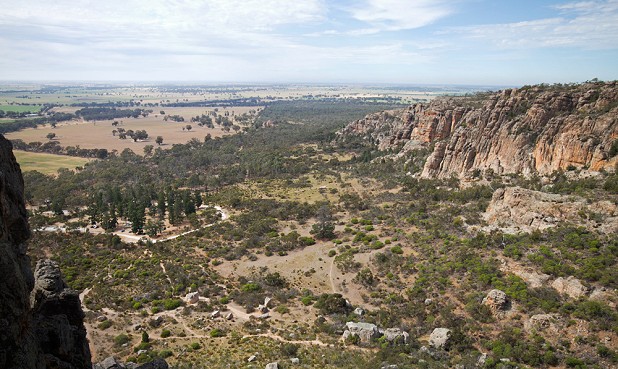
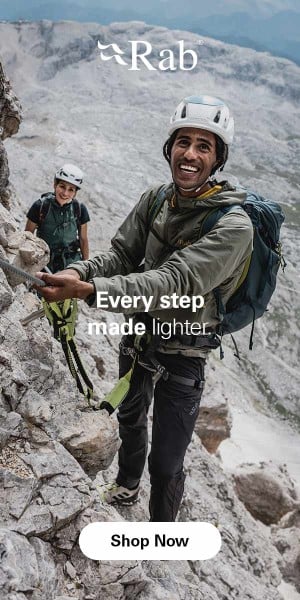

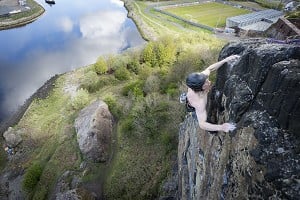

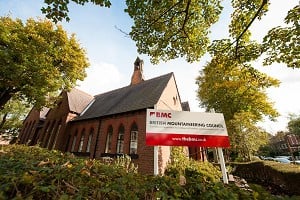



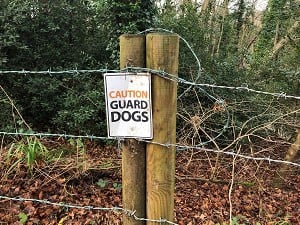
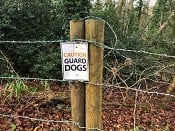
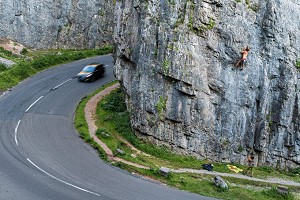
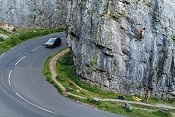
Comments
Such a shame that all the good climbing areas in Australia are banned now. I remember having an amazing few months in Araps years ago and equally great climbing in the Grampians. I guess I will have to remove it from my list of places to go back to now.
This is such a bad piece of news for Natimuk. I believe that the town has about 450 population, over half of whom are living there because of the fabulous climbing just up the road at Mount Arapiles. It is also said to be the only rural centre in the whole of Victoria which has seen an increase in population in recent decades, whereas the vast majority of such towns have seen drastic loss of population.
On a purely personal basis, I have been lucky enough to spend many days climbing at The Mount, and many of these outings are in my list of most memorable climbing days. I am very sad to think that I may never climb there again, but even more I mourn the loss of such experiences which may affect other (younger) climbers.
I would love to see how many people actually care about the supposed damage climbers have been doing to arapiles and are going to have their lives improved by this ban, compared with how many people are going to lose out becuase of this ban. I bet the numbers are probably less than a 100 compared with 10s of thousands. How many aboriginals actually visit the site over a year because of it's cultural heritage, i spent a month there 10 years ago and didnt see any, I guess banning climbing is just going to mean nobody goes to these beautiful places anymore. If it was shown that aboriginal visits rose sharply into significant numbers due to baning climbers than i guess i could support the ban, but I highly doubt this will happen, has it happened at Taipan wall?
It is interesting that the cultural important sites are being “rediscovered “; if they are so important why have they been forgotten. Sounds more like an excuse to ban public access. Feel sorry for those inhabitants of Natimuk who will now suffer. You can bet there would be outrage from VP if an aboriginal community were to suffer in the same way due to the European descendant community.
This news is absolutely devastating to Nati and the wider climbing community. We have seen huge impacts from the Grampians bans and expect that these new bans will economically and socially sink our unique little community. Parks Victoria have portrayed us us cultural heritage vandals and have consistently refused to engage with any stakeholder groups. The way they have decided to manage the process is staggeringly incompetent and incredibly one sided. We have repeatedly asked what harm have we done in the last 60 years of climbing and have had no reply let alone engagement.
Traditional owners have insisted on the latest bans because quarry sites and stone scatter have been found near or on the crag by a park ranger. We have co existed with this cultural heritage and have done it no harm but suddenly we are a risk and are denied our connection with this amazing landscape. I'm yet to be told how me climbing near small areas of quarried rock is going to cause harm. Ironically our climbing community here is really sympathetic/pro Traditional Owner rights and would welcome working collaboratively with the local mob to protect their heritage out at the mount. We acknowledge that Australia's First Nations have been treated appallingly and there is a long way to go to start the process of truth telling and reconciliation. Parks Victoria have obstructed this process and continue to portray us as a threat that requires us being locked out of our public spaces. Reconciliation looks to be impossible in this current political climate and despite our best efforts so far the glacier of total climbing bans advances every day. If anyone reading this overseas is concerned and would like to be able to climb here in the future please consider writing to our State Premier Daniel Andrews, Minister in charge of Parks Lily D’Ambrosio or our local Traditional Owners Barengi Gadjin Land Council. Any help would be appreciated. We are a small rural town that has started a grieving process as we are progressively denied access to the place we love and have cared for. On the other hand we will keep trying to be heard and hope that some common sense rears its head soon.